On September 23, 1948, a group met in the Lewis & Clark School in Richland to organize an outdoor sports club. They decided to temporarily call themselves the Desert Rats Alpine Club. More than 50 years later, that same club under a different name, is still going strong. This is a collection of articles detailing the club history in the first 50 years.
I-MAC, along with several other organizations, grew out of the interaction of people living in the dorms during the early days of Hanford. With very few houses existing in the small, former farming, town of Richland, dorms (segregated of course) were provided to house the hundreds of men and women who were employed on the project. Although they were provided with the latest movies and big name entertainers, more outlets for leisure time were needed. As these newly recruited employees became acquainted, people with like interests sought each other out and formed organizations to share and promote those interests.
Larry Upson was the person who took the initiative in bringing about that first meeting. Larry, a native of Oregon, had hiked and climbed prior to his “temporary” move to Richland. He guided the club through its formative years, serving as the first president and carrying much of the work load the first two years. Larry was knocked out of commission for awhile when he contracted polio, but did recover and was able to participate in club activities once again. Appropriately, he was elected the club’s first honorary member in 1979. He and his wife Teddy currently live in Underwood, WA. which overlooks the Columbia and Mt. Hood. Each spring they host the I-MAC’s overnight for our annual Columbia Gorge trip and Larry continues to provide the club with information on potential hikes/climbs, conservation matters etc. All our thanks!
Two of the earliest problems facing the club were choosing a permanent name and determining the exact nature of the club. Names such as Richland Outing Club (ROCs), Atomic City Mountain Club and Sage Brush Sprinters were suggested and rejected at the first several meetings. Finally Larry spotted a P.I.E. (Pacific Inter-mountain Express) truck one day and was inspired. Many early members wanted the club to be primarily a social group while others were diehard climbers. Eventually some fairly stiff hiking requirements were placed as qualifications for membership. Those requirements have since been eased.
The club’s first actual trip was a late October hike in the Blues. The weather was cold and the trip leader tore the drain plug off the oil pan of his car on a rocky high center coming out, but a thermos stopper and spare oil in the trunk got them home. Five carloads of hikers made the trip.
The first full season began in 1949 with a mid February afternoon hike up Badger “Hill”. Other trips that year included skiing at Mt. Spokane, a bike trip and hikes/climbs in such areas as Juniper Canyon, Cairn Hope Peak, Satus Pass, Chinook Pass, Mt. Hood, the Wallowas, Kloochman Rock, Priest Lake, Mt. St. Helens, Mt. Stuart, Mt. Adams, Rampart Ridge, Lake Chelan, Mica Peak, Mt. Emily and the Blues. Often these trips were to areas where no member had been before and sometimes the only directions were those provided by a friend of someone. Mt. Stuart was such a trip. They eventually found the mountain and made the climb, but got home at 6 am Monday morning. A total of 19 hikes and 15 climbs (9 official) were made that first year with an average 10 miles and 15 hikers per hike and 7 climbers per official climb.
Social events included roller skating, ice skating, wiener roasts (including one in a dust storm). Slide shows and a steak fry at Mt. Spokane with the Mountaineers.
The club’s first mountaineering course was offered early in 1949 with a 6 night series of lectures covering rook climbing, rope technique, snow and ice climbing, geology, equipment, map readings mountain rescue and weather. The cost for the series was 35 cents for members and $1.00 for non-members. The class concluded with a practice trip in the Columbia Gorge.
The club’s first annual banquet was held in December 1949 in the Desert Inn following the annual meeting. The banquet featured a Mr. M.G. Barnard speaking on an expedition to Baffin Land. Entertainment was provided by a barbershop quartet.
Membership costs then were $2.00 per person initiation fee and $3.00 single and $5.00 couple annual dues. The club had 44 members at the end of that first year.
1950 was the year of THE outing. The 9 day trip to Oregon’s Jefferson Park in early August took 6 months planning and preparation and, lacking today’s light weight pack gear and food, it was quite an expedition! The group (10 members in all) divided into an advance party (to purchase all the fresh food on the spot), an inland group (who climbed Hood and Three Fingered Jack enroute) and a third group who took the coastal route sightseeing along the way. At Breitenbush Springs they met the packers and loaded their gear on 9 mules for the trip into base camp at Scout Lake. Some time was spent in constructing and setting up camp with its cook tent, supply tent, change tent, sleeping tents/tarps-, disposal facilities, table and double oven fireplace. By Wednesday they were ready to hike. The group climbed Jefferson and took various day hikes in the area, returning to camp for meals of hot cakes, baked ham, steaks, freshly made biscuits, cobblers and cherry pie, salads, fresh vegetables and milk followed by campfires, marshmallow roasts singing and recorder music. At the end of the week, the packers came back for the gear (which included huge kettles, stainless steel mess trays etc.). After a relaxing swim at Breitenbush Springs, they headed home. The three wives on the trip did most of the food preparation, but were able to hike some. More established clubs of that time hired cooks to allow club members to do more hiking on such trips.
There was a full season of “ordinary” trips too. They started with skiing and conditioners (Badger, Johnson Butte, Wahitas) and included the Gingko Forest, Grand Coulee, Palouse Falls, Tollgate, American River and boat trips/hikes to the Snake River Canyon, Lake Chelan and Coeur d’Alene Lake. Climbs included Matterhorn & Sacajawea, Guye & Lundin, Adams, Stuart, Cashmere Crags and several climbs on Hood. One notable Hood climb was billed as a “Tenderfoot” climb and drew 18 people. ‘They left Richland at 6:30 Friday evening, arrived at Government Camp around midnight obtained their gear, and since it was a clear bright night, drove on and started climbing at 3:00 AM Saturday morning. They were at the 9000’ level by sunrise and made the summit between 10:30 and 11:30. They were back to Timberline by 3:00 PM Saturday so drove on home that evening. Multnomah Falls to Nesika Lodge (Trails Club) to Larch Mt. was a popular trip. Closer to home, Badger was scheduled a second time in May as a moonlight trip, departing at 7:30 PM and returning by 11:00. Since they didn’t have the Spudnut Shop, departures usually were made from the Mart – a cafeteria located just south of the current Federal Building.
A Red Cross first aid course was given in 1950 along with 2 climbing classes. I-MAC sponsored a public showing of a film, “Teton Adventure”, presented by Glen Exum. There was a charge of 65 cents per person and nearly 400 people attended. Social events included weekly swims, monthly picture shows and several picnics. Joe Soldat composed “The I-MAC Song” to the tune of “Home on the Range”. The club separated the annual meeting and the annual banquet this year. In addition to dinner and a speaker (Mrs. F.D. Mack of Sunnyside) the banquet featured a presentation of “The Shooting of Dan McGrew” and dancing.
By 1951, the club hiking and climbing schedules did not differ much from what we have today. There was an occasional exploratory trip into new territory – such as a 2 day trip into the Clearwater National Forest in Idaho (500 mi. RT). Annual outings on the order of the big one in 1950 were scheduled yearly for several years, but didn’t occur due to a lack of bodies. (In 1951 only 4 bachelors signed up. A need for women to also go along was expressed). A number of trips were scheduled jointly with other clubs and often included an overnight stay at the other club’s lodge. Evening activities would include singing and folk dancing. Occasionally ‘mystery hikes” would be scheduled with the leader and destination unannounced. Trips into a cabin on Priest Lake owned by Lee Daniels family became a regular event and Juniper Canyon hikes included tours of McNary Dam which was then under construction.
Cross country skiing gained favor over downhill with Bob Moore providing leadership. Rick Mack (1950 annual banquet speaker) invited I-MAC to the Gold Hill cabin (the old cabin-which was originally a prospector’s cabin) in 1951 starting a tradition. Climbs were mostly snow climbs due to club members’ lack of experience on rock. Climbing leaders would arrange for rental of axes and crampons from Seattle for trip participants if given 10 days notice. Then in ’53 the club bought ice axes and crampons to rent out. A deposit of $8.00 per item was required and weekly rental rates were 50 cents for axes and 75 cents for crampons. The club treasurer originally kept the equipment and rented it, but it soon wound up in John Young’s basement and a steady parade of renters found their way to 1501 Johnston.
In 1952 Hank Helmholz had the unique experience of losing his camera on a climb of the Middle Sister and of getting it back six weeks later while climbing Mt. Jefferson. Seems that a group of Skyliners had climbed the Middle Sister shortly after the I-MAC trip and were on Jefferson at the same climb as the I- MAC climb.
The first conservation issue to come before the club was to fight the proposed damming of two rivers in the Dinosaur National Monument.
Public showings of films/slides narrated by well known mountaineers were scheduled every year during the early 50’s. Among those presenting shows were Pete Schoening and Fred Beckey. In ’52, I-MAC joined with the Allied Arts Association to present a showing of paintings by Ross Gill (mountain scenery, wild flowers, sea scapes) and received a percentage of the profits. We sponsored a second showing of his works a few years later, but had incorporated by then as a non profit organization and the IRS objected to our receiving income from the show.
By 1951, a number of the early members had moved elsewhere, but they often “wrote home” and many of these notes were published in the Yodeler. Lengthy epistles were published relating the travels of Warren Hausler, “I-mac’s Innocence Abroad”, as he spent many months climbing and sight seeing in Europe. One of his observations was of the custom of guides who were conducting climbs in the Alps to put ALL their climbers on one rope – as many as 20 people on a 120 foot rope. These ropes were kept taut and were often used to pull people over difficult spots.
Equipment recommendations were published in the Yodeler and included: Footwear: nailed boots (Hobnails for hikers and Tricountis for climbers) or the new lug rubber sole boots ($14-15), Packs: ruck sack ($4) for short hikes, climbs and skiing, and the Trapper Nelson ($6.50 – 8.50) for heavy loads (the Bergen was good, but rode too low), Sleeping Bags: down was best, but was expensive ($30 or more), Wool batting (not wadding) was good, but heavy; Clothing: wool in layers – have a wind breaker; Sunburn preventative: a hat plus preparations such as Norwich greaseless, Coty, Sutra or Skolox. USGS maps were available for 20cents each.
Interesting side notes published in the Yodeler included development by the Forest Service of a disposable sleeping bag. It was made of paper with a cotton batting liner. It weighed 5-1/2 lbs. and cost $5.00. A brief history of mountain climbing was printed. The first climbs were made strictly to gather scientific information with Jacque Balmat ascending Mont Blanc in 1786 for that purpose. Not until 1850 did amateurs become interested in climbing as a sport. The first alpine club was formed in London in 1857.
The club emblem was designed by Bobbie McIntosh was used in a variety of settings on Yodeler covers along with mountain scenery and a little lederhosen clad “yodeler”. Trip fees were raised to $.25 (1 day trip) and $.50 (2 day trip) for members and $.50 (1 day trip) and $1 (2 day trip) for non-members. Trip fees had previously been the same for both members and non-members. Changes in membership requirements were made to include an “Associate member” who had been on 3 trips within 6 months, but hadn’t yet made that big trip (over 15 mile hike or a climb with an overnight bivouac) required for full (“active”) membership. Associate members could not vote or hold office, but had all other privileges of membership. The quorum required to conduct business at the annual meeting was dropped from 50% to 33 1/3% due to the difficulty in getting a quorum out without spending 1 1/2 hours on the phone the night of the meeting (and not everyone had a home phone in those days).
Bob Henderson was club president in 1951 followed by John Young in ’52 and Fred Facer in ’53.
A club tradition was begun in 1954 when Badger was climbed for the first time on New Years Day. In 1954 the Central Washington Mountain Rescue Council was formed with I-MAC as a participating member. Training sessions were held each year with a number of I-MAC members attending over the years. Another outing was finally held – this time in the Tetons. Packers were again hired to haul gear into a base camp (at Garnet Canyon). Storms hampered activity early in the week, but the Grand Teton and Middle Teton were climbed. An unusual trip combined a visit to the Pendleton Roundup and Happy Canyon with a short hike the next day. I-MACs returning from a climb of Little Tahoma discovered that while they were gone, a bear had visited camp and systematically ripped open packs, devouring all food found until it polished off a whole can of black pepper from Don DeHalas’ pack (there were witnesses). Dick Hammond was the club president in ’54.
1955 featured several unusual trips. Randy Brown led a geology field trip in the Priest Rapids area. An opal hunt was scheduled near Hepner and a hike in the San Juan Islands. Social events included a charades party and horseback riding in addition to more usual events. During this period one ski trip a year was scheduled as a “Bunny Burrow” (camping on snow). The club president in ’55 was Tom Evans.
In 1956 Don DeHalas was I-MAC president. There were some climbs, some hikes, and some social events – but apparently not a whole lot. The fact that about half (well, lots anyhow) the members of the club got married that year might have had something to do with the slim schedule.
In 1957 I-MAC went all the way to Tipsoo Lake for a picnic. Four members of the club participated in the successful rescue of a climber injured on Mt. Johannesburg. Herold Triebs was president in both 1957 and 1958. During this time, a number of changes were made to the club by-laws – including the dropping of the associate member category.
In 1959 Ben Johnson was president. A notable social event was a visit to Ohme Gardens near Wenatchee.
By 1960 we were meeting at the Spudnut Shop for day hikes. Dick Hammond was president again. The climbers decided to initiate a climbing award system with stars (3 approved peak – one red star, 25 peaks – one silver star, 50 peaks – one gold star) awarded which could be placed under the club patch. Although a number of people were qualified for some of these awards, no one ever applied to receive them and the award system was quietly forgotten. I-MAC was officially incorporated in 1960.
In 1961 John Young was president again. The club made its first visit to the Juniper Forest. There was discussion as to whether or not the club should purchase a cabin in the mountains (we didn’t.).
1962 started off with a surprise. Those members who climbed Badger on New Years Day were greeted by a large sign placed there at “12:01 AM by A. Bominable Snowman (member of Hillary’s Hiking Club)”. The sign wished the I-MAC a Happy New Year and advised them that they had reached the summit and could now unrope. Randy Brown conducted another geology field trip (Horse Heavens to Priest Rapids) and a limerick contest was held with members invited to furnish a last line to the following:
A camper whose name was O’Neal.
Was preparing his evening meal.
The campfire went “pop!”
He upset his glop.
Some of the endings submitted included:
And let off with a nasty spiel.
And the odor made everyone reel.
So from Hahn a meal he did steal. (That was Larry Hahn, not our Thad).
Dean Dickinson was president in ’62 followed by Malin Weiler in ’63.
In 1964 we received an invitation to join Supreme Court Justice William O. Douglas on a trek along the Olympic Peninsula. There is no record as to whether any I-MAC member accepted the invitation. Warren DeMier headed the club in 64.
In ’65 the first bike tour was held (on the San Juan Islands). One or more such tours were held each year for a number of years until the formation of the local bike club. 1965 also saw the start of a several year series of mushroom hunts. Bill Van Slyke provided leadership on most of these trips, Word was received that Duane Hudson had carried the I-MAC banner to the top of Mt. Kilimanjaro. The first Christmas tree cutting trip was held in ’65 starting another series which lasted for many years.
Bob Smith led the club in ’66. A backpack outing was held in Wyoming’s Wind River Range. A notable social event was a dinner hosted by Pauli Budd which featured moose ad the main course. The annual banquet featured Gaston Rebuffat, famous French climber, guide and author as its speaker. 1966 was also the year a contest was held to determine all the uses of the ice ax. Jim Stoddard won the contest with an entry of 138 uses. To date he has not yet claimed his prize which is still being stored in the Young’s basement. A total of 250 uses were submitted by the various entrants and this list was published in the Yodeler. By popular demand, the list is available on the Web ( 250 Uses of the Ice Axe ).
In 1967 John Brimhall was president. A hiking outing was held in Glacier Park and Pete Schoening described a National Geographic expedition to the Antarctic at the annual banquet.
In 1968 the AEC allowed I-MAC to conduct a hike up the east side of Rattlesnake U.S. Citizens only, no smoking, no cameras or other contraband and no walking off trails. 33 people took advantage of this rare opportunity. Ghost towns of eastern Oregon were visited. I-MAC opposed construction of the Ben Franklin dam. I-MACs visited the Marmes Rock Shelter, an important anthropological site on the Snake River near Palouse Falls which was scheduled to be flooded by a new reservoir. By pure chance, they arrived at the dig site at the same time as Senator Warren Magnusen and others arrived for ground breaking ceremonies for a protective coffer dam. A hiking outing into Idaho’s Sawtooth Primitive Area provided excitement. Toward the end of the week, we arrived at Alpine Lake to find a small forest fire caused by a previous camper’s carelessness. We were able to put out much of the fire, but couldn’t reach a burning snag. Tom & Chris Reynolds hiked out to Redfish Lake to summon help. A helicopter arrived that evening. I-MAC met the chopper, helped the two fire fighters carry their gear and held flashlights for them as they worked most of the night. Alan Gibbs was president in 1968.
A highlight of the ’69 season was a hiking/climbing outing to Mt. Assiniboine Provencial Park enjoyed by 19 participants, The club held Its first wine tasting party and first Yakima River float trip (no, those were separate events). One canoe, one row boat and one rubber raft made the trip from Kiona to the Horn Rapids Dam. Word was received that the Nepalese government was raising the cost of a permit to climb Mt. Everest from $500 to $1000. Our banquet speaker was an aquanaut with Navy Sealab III. The Alpine Lakes Protection Society was formed and Marlyn Jakub served as our president.
Pete Owczarski was elected president for 1970, but had been transferred to Seattle. He tried to commute to board meetings for awhile, but had to resign and was succeeded by Dave Wilson. A hiking outing was held in the Olympics. I- MAC taught several mountaineering short courses at Columbia High School (now Richland High) as part of an “Experiment in Free Form Education” program. A notable social event was a camp food comparison dinner with Richmoor winning I- MAC approval over Mountain House and Trail Chef. Conservation and ecology issues were quite important to much of the community as a whole as well as to I- MAC at this time. The fight against the Supersonic Transport, Zero Population Growth, routing of the 1-182 bridges (a north Richland route was favored by many), conservation of water, paper etc. and recycling were big Issues and were highlighted at Earth Day” observances.
In 1971 our current trip classification system was adopted. Previously the letters “A, B, C, & D” had been used along with numbers. Ed Sheen was president in ’71.
In ’72 Tom Dabrowski headed the club. The AEC opened the White Bluffs/Wahluke Slopes area on the NE bank of the Columbia to the public for fishing, hunting and hiking. I-MAC immediately scheduled a trip there. A North Cascades hiking outing was held. A guest on a trip to Little Big Chief hit a tree while glissading and injured a knee requiring helicopter evacuation. This was the first time an air rescue had been required on a club trip.
By 1972 our membership had grown to 105.
In 1973 Bob Strebin was president. The hikers held an outing in Wyoming’s Wind River Range and the climbers spent a week in the Southern Pickets. A solo climb by a member of that party initiated the formal club policy against solo climbing. Ghost towns were a popular trip destination that year.
In 1974 the Great American Gas Shortage was a club concern. Transportation fees were raised and members were advised not to carry extra gas inside their cars. Our annual banquet featured a glaciologist. Marv Zimmerman led the club in ’74.
1975 was not a good year for the club. Several club members skied part way up Gold Hill despite having been warned not to. Two persons were caught in a surface avalanche. Dignities were bruised and some equipment was lost. They were lucky. To add insult to injury, another ski was lost in Richland while returning home thanks to an unfastened ski rack. A climbing outing in the Chilliwacks was marred when one member of the party decided on the first day to bag the planned agenda and simply camp for the week at a lovely spot 2 miles off the trail, then rejoin the rest of the group on their way out. Trouble was he didn’t tell anyone. The rest of the group spent 3 days searching before they found him. Bill Reed was president in ’75.
In 1976 Pete Owczarski, back in the Tri Cities again, served as president. A Picket Traverse outing was (apparently) held and Pete Schoening shared slides and stories of the ’74 American expedition to the USSR Pamirs at the annual banquet.
Tom Dabrowski headed the club again in ’77. Our banquet speaker entertained us with slides of a round the world bike tour. An outing was held in the Sawtooths. I-MAC scheduled a joint backpack along the Wenaha River with local Sierra Clubbers. Much time was spent avoiding (or killing) rattlesnakes and marveling at all the gear (such as a full 48 fl oz bottle of dish washing liquid) hauled in by the Sierra Club members.
In 1978 the climbers held an outing in the Pickets and the hikers spent a week touring Zion and Bryce National Parks. There was more debate at board meetings on transportation fees and they were raised again. An incident on a club trip led to a formal policy on no marijuana (or other drug) use on club trips. A fun social event was a progressive dinner where we walked from one home to another for 4 separate courses. Glenn Hoenes was I-MAC president in 1978. Several members visited the King Tut exhibit in Seattle.
Sue Nutter became the first female elected president of the club in 1979. An outing was held in Utah’s Grand Gulch. A bread tasting party was a novel social event. Larry Upson was elected to Honorary Member status.
In 1980 Dennis Elliott was president and Mt. St. Helens blew her cork. We’re not sure if there’s a connection. 48 individuals were on an I-MAC climb of Hood and 8 hikers were enjoying the Columbia Gorge when St. Helens blew. Some of the climbers watched part of the eruption from Hood’s summit and the hikers made a point of driving to Larch Mt. to watch the eruption which they’d observed earlier. None of those individuals recognized the full significance of what they’d seen until they heard radio reports on the drive home. Some of them had been puzzled by the unidentified black mountain located about where Adams should have been. Chuck Rogers had made a special trip to observe the mountain and found himself in a safe ringside seat when it blew. The club put together a slide show of the eruption for a social event that was so popular that it was repeated at the Battelle auditorium. The ash fall altered several scheduled trip destinations. A two week outing was held in Alaska’s Brooks Range. An unusual social event was a St. Patrick’s Day potluck: any food was fine as long as it was green.
In 1981 an outing was held in the Northern Pickets and John Young was elected an Honorary Member of the club. An early winter storm in the Cascades involved a number of club members. A Tri-Cities hunter who was not prepared for the bad weather became lost during the storm. We were asked to participate in the search and 12 members took part. It was a frustrating experience and the hunter was eventually found – dead. About the same time, 3 I-MAC members climbing Rainier were caught in a storm with 2 men from Seattle. They were at Camp Muir when the storm hit and spent 3 days there before starting down the mountain. The storm picked up again, forcing them to dig a cave where they spent 2 nights. They were able to resume their descent and met a rescue party a short distance from Paradise. Bill Kennedy was president in ‘ 81.
In 1982 Bruce Napier was I-MAC president. Outings were held in the Sawtooths, the Sierra Nevadas and the Pasayten Wilderness. The annual banquet featured a speaker describing his flight for life from an erupting Mt. St. Helens. Tragedy hit us when I-MAC member Judy Scott, skiing with other club members on a private trip in the Eagle Cap Wilderness, was killed when she was caught in an avalanche.
Steve Lyke was president in ’83. During several years around this time the club schedule was exceptionally full. Outings in 1983 included a trip to the Grand Canyon and exploration of the Dot Lake area.
In 1984 Jeff Scheetz and Preston Andrews spent most of the summer climbing in the Canadian Rockies. Outings were held in the Stehekin Alps, Yellowstone National Park and Yosemite. The Yosemite climbing outing was the start of what became an annual event. The club spent a weekend on trail maintenance and has tried with very limited success to hold similar work parties since then. Bob Popielarczyk was president in ’84.
In ’85 Jeff Scheetz filled in for the scheduled annual banquet speaker (who had car trouble) and gave us a taste of his summer of 84. An outing was held visiting Johnny Lakes. The club visited the blow down areas at Mt. St. Helens for the first time and generous Jill Murphy made a donation to the club. Jim Langdon was president in ’85.
Joe English led the club in ’86. Several club members had a chance to compare their First Aid training with techniques used by the pros when an I-MAC skier broke a leg in a freak accident a short distance from the top of the chair lift. The club scheduled a trip Expo ’86 in Vancouver B.C. Outings went to Eureka Greek, Luna Ridge, the Southern Pickets and Yosemite.
Mark Halverson led the club in ’87. Outings went to Yosemite, Image Lake, Valhalla and the Shipwreck trail on Vancouver Island. That last trip featured a multitude of ladders plus cable cars and swinging bridges for a unique trip.
1988 is still in progress. Jim Truitt is president and we are celebrating our 40th anniversary. Our celebration included a potluck dinner in September, a moonlight hike up Badger (recreating some early hikes), publication of the club history, and a display of equipment and photos at the Richland Library. Unfortunately, some of those photos were stolen. In 1988, a publicity committee was formed, the historian position was reactivated, summer evening bike rides were instituted, and a major revision of the By Laws was made. To finish off a very busy year, Kit Hunt was elected the club’s 3rd honorary member.
In 1989 we engaged in one of our favorite activities – changing the club transportation fee system. It only took 8 months to accomplish the task. Washington State was celebrating its 100th birthday and several trails were designated as Centennial trails. We hiked several of them that year. In addition to the usual spring Columbia Gorge trip, we added a fall trip to take in the fall colors. Unfortunately there weren’t any fall colors yet to view. A member’s van was broken into while we were hiking with considerable loss of property. Reporting the theft in Hood River was a lengthy process and a fire on the Washington side complicated getting to the Upson’s that evening. We’ve never tried a fall Gorge hike since. Marilyn Young was president in 1989.
In 1990 there was concern about the Peshastin Pinnacles being lost to climbing as a crucial part of the property was private land which was about to be closed to the public. I-MAC contributed to the fund which allowed the state to buy the property and keep it open to climbers. Jim Langdon was president in 1990.
Paul Meier was president in 1991. This was the year we introduced I-MAC T- shirts. Mark Halverson may still have some left. Pete Rieke was president in 1992. We discovered that the state had dropped our corporate status. Seems we hadn’t paid our annual dues for some time because we hadn’t received the notices – because someone had moved long ago. We re- incorporated. Six club members took an intensive First Responder first aid course along with local police and fire fighters. The instructor tried to load us up with heavy, bulky medical equipment to haul along on all our trips. The three members who opted to take the certification test (Mark Halverson, Gary Maupin, and Pete Rieke) had the top 3 scores on the test. Mid-week evening ‘back yard’ hikes were instituted that year.
In 1993 Bill Gurwell was president. Having run out of local mountains (apparently) some of our crew headed to Bolivia to go climbing. Hanford celebrated its 50th anniversary and urged local organizations to participate. We started work on two projects : a booklet of “Hikes Around Home” [now available on the website] and a hike on the Hanford Reservation. Dean Dickinson was elected to honorary membership.
Jim Langdon was president in 1994. We finally pulled off the hike up Bob Cat Canyon on the NE side of Rattlesnake Mt. – 8 months after we started work on a “Hanford Anniversary Hike”. We waded through tremendous amounts of red tape in the process. Over 60 people expressed interest with 47 actually making the trip. We conducted our first trail maintenance trip with Rusty the Ranger. A women-only backpack was held and forest fires burned 180,000 acres in the central Cascades. Pete Rieke broke his back in a climbing accident (non-club trip) losing the use of his legs – but vowed to climb again.
Alan Hosler led the club in 1995. The well-dressed I-MAC now sported an I-MAC sweatshirt over his/her I-MAC T-shirt. Both men only and women only backpacks were held this year. The club endorsed the preservation of the Hanford Reach. A hike along the Tap Teal Greenway produced a surprise: our hikers found a stolen motorcycle hidden in some brush.
In 1996 Edee Edwards was president. A rapid spring melt brought floods to just about everyone and washed out many trails and mountain roads causing considerable shifting of our schedule of trips. Bill Gurwell retired from his job and started a backpack marathon that has taken him to far corners of the world. The board tried hard to arrange a surprise 40th birthday party for Jim Langdon, but was surprised itself when Jim threw his own party. After a discussion on merits and costs of having a home page on the Internet, it was decided that it was a nice idea – but cost too much and that I-MAC would probably never have a home page until “John Young gets his own computer” (read about 2075). In very short order 2 parties donated a computer each to John. Afterwards, George Meriwether sponsored a home page for the club. You can visit us on the web at: www.3-cities.com/~ghm/imac/imac.html [Editor’s note: Isn’t our new address, www.imacnw.org much nicer?].
Jim Langdon was president (again) in 1997. The Rock Docs (mountain medicine) column made its world premiere in the Yodeler. Heavy snowfall in the Cascades hampered winter activities. Dog hikes were introduced on a limited trial basis. A formal membership survey was conducted to aid in setting a new transportation fee system. The new Forest Service trail head parking fees further complicated a system we hoped to simplify.
1998 has arrived and with it the celebration of our 50th anniversary. Plans for the banquet are underway. A variety of old and new activities have been conducted. Social events have included such repeats as the all green St. Patrick’s Day dinner, ice skating and a tea party. The hikes, climbs and winter activities included a number of old favorites plus geology and photography hikes. Some club members spent much time in extra committee meetings coming up with new transportation fees, another major by-law revision, and a hopeful agreement with snow mobiliers on usage boundaries for Horseshoe Prairie. A solo skier surprised the January Gold Hill crew when he showed up at the cabin twice – lost each time. The second time was late in the evening and he was cold, very wet, and hungry. He also had a frantic wife waiting for him at Crystal Mountain Ski area on the other side of the ridge. After putting him up for the night, our crew escorted him to Crystal – leaving the cabin before a rescue party showed up.
Four years after his climbing accident, Pete Rieke did return to the mountains on the snow pod he and friends designed and built. His Crank Rainier project led by wife Wreatha Carner featured a successful climb of Mt. Hood followed by the climb of Mt. Rainier which was halted by a huge crevasse near the top. They turned around to climb another day – faring better than other near by parties who required rescue. Mark Hoza heads the club in 1998.
Over the years a number of events have become traditions. Among these are the annual hikes in the Columbia Gorge with an overnight stay with Larry & Teddy Upson and the Cinco de Mayo party hosted by Mark Hoza & Cheryl Eiholzer. The Christmas and New Year’s Eve parties followed by the New Year’s Day hike up Badger and the chili feed are our oldest traditions. Lately the chili feed has found a home with Judith Bamberger and Bruce Napier. For years the annual pool party was known as Malin’s (Weiler) pool party. Now Phil and Diane Ohl are filling that role.
We have traditions. We have covered a lot of miles. We have had our share of true characters. It’s been a good 50 years!
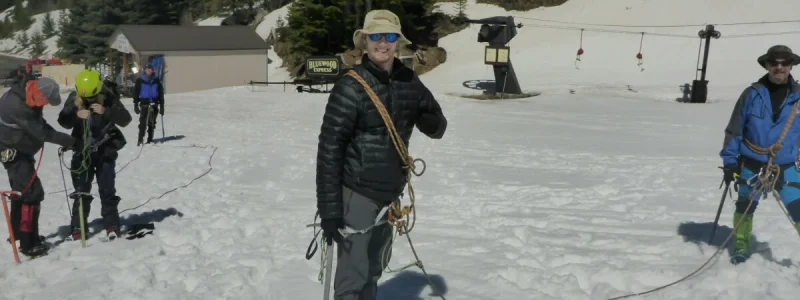

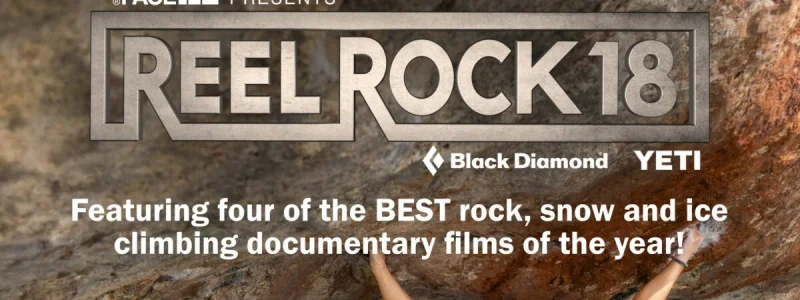
I-MAC enjoys providing the community with opportunities to come together with other outdoor enthusiasts to learn and share. The Reel Rock Film Fest is one such event. This annual event showcases a set of spectacular films about rock climbing (Think Free Solo, only shorter). REI and local climbing clubs toss prizes into the crowd during the intermissions. Proceeds from the event go to worthy organizations selected by the I-MAC Board.
We also host guest speakers from outside the area to provide presentations on mountain climbs, ski tours, hiking and other backcountry adventures. I-MAC members also provide presentations on a variety of topics from epic club hikes to conservation.
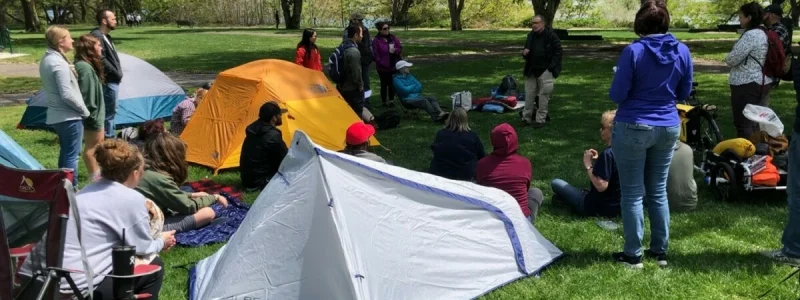
Are you interested in learning how to backpack? If yes, then the I-MAC Backpacking School is for you. This free two-day class is offered nearly every year. A combination of indoor and outdoor classes teaches you what you need to know to start backpacking on your own.
The purpose of the backpacking school is to prepare participants for comfortable and safe multi-day backpacking trips. No prior experience in the outdoors is required. Each topic is taught by an I-MAC member with years of experience.
Topics include:
· The ten essentials
· Training for a backpacking trip
· Gear (e.g., tents, sleep systems, water filters, stoves, backpacks)
· Nutrition and cooking
· Water purification
· Route planning
· Navigation including map & compass and digital navigation
The first day consists of lecture-style presentations. The second day includes outdoor field demonstrations of equipment and techniques at a local park. The school culminates in overnight backpacking trips led by I-MAC trip leaders.
Before the course, we recommend you get the book The Backpacker’s Field Manual, by Rick Curtis, and read as much as you can (it is not available through REI). We also recommend that you join I-MAC before the school. Membership will get you access to more information about our trips, both before and after, and about our community.
The school is free and open to the public.
Registration is required.
For inquires, please email to backpacking@imacnw.org.
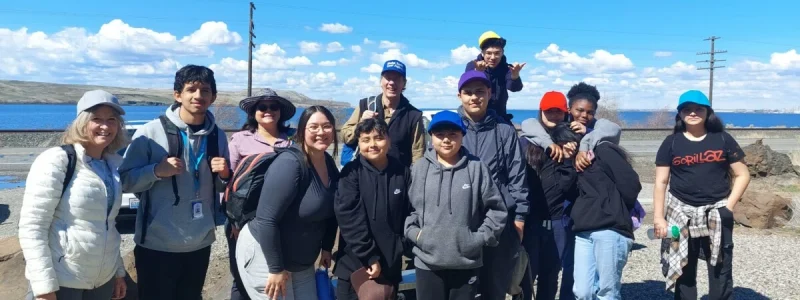
I-MAC partners with local community organizations to teach youth outdoor skills and provide outdoor experiences, such as hiking. I-MAC has partnered with Boys and Girls Club of Benton and Franklin Countries as well as Girls Scouts of Eastern Washington & Northern Idaho.
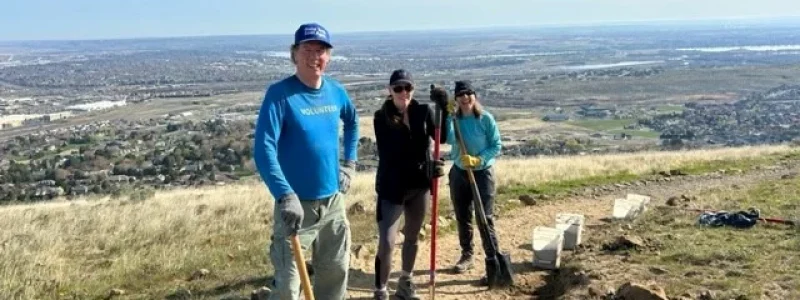
I-MAC focuses most of their trail work volunteer time on local trails, specifically Badger and Candy Mountains. These trails are used by 300,000 people every year. The trail work is led by I-MAC’s Jim Langdon, who is the FRIENDS OF BADGER MOUNTAIN TRAILMASTER.
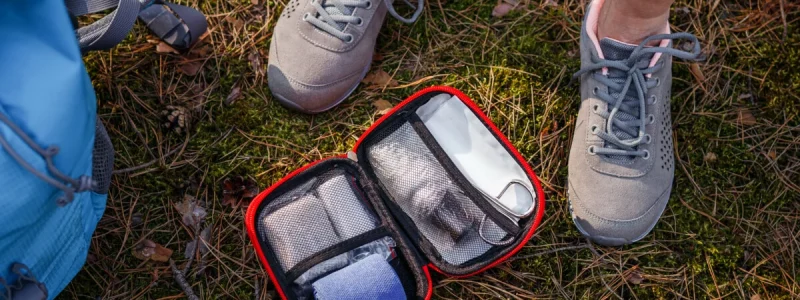
I-MAC hosts Wilderness First Aid classes, provided by outside agencies, on a semi-regular basis. The most recent class was presented by Longleaf Wilderness Medicine and was held at Columbia Basin College, using both indoor and outdoor spaces. Instruction includes both lecture and hands-on practice. Classes are open to the public and I-MAC members can register before the public.
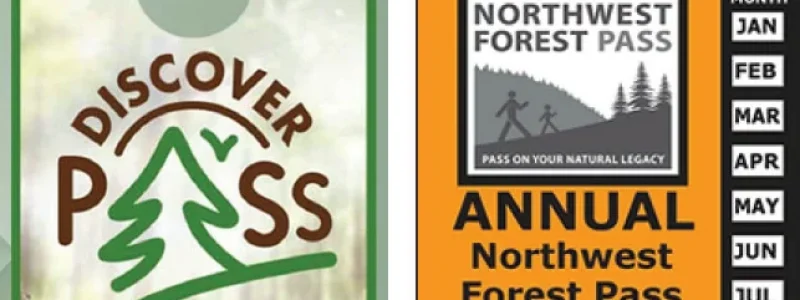
Trip participants are expected to pay drivers a fee to help cover the cost of fuel and vehicle usage. The per milage rate is occasionally adjusted to reflect the general cost of fuel. We want drivers to feel comfortable that their costs are covered, but we would also never want the cost of carpooling to prevent someone from going on a trip. We aim to keep the rate at an acceptable compromise for everyone.
The current mileage rate of $0.12 per mile was voted on by the I-MAC board in April 2023.
On the first day of the trip, be prepared to pay your driver in cash for the amount noted in the trip cost section of the trip description. Checks are not accepted. Some drivers may accept Venmo or other cash apps. Check with the driver prior to the trip if you would like to pay with a cash app.
PASSES FOR PUBLIC LANDS
We are fortunate to have easy access to city, county, state, and federal public lands. Some of these parks and forest are free while other charge fees. Depending on who manages the land, the required fee or pass is different. Below is information about the three primary passes you’ll need to enjoy federal and state public lands in the Pacific Northwest.
Annual Washington State Parks Discover Pass
Discover Pass is a permit that gives you access to state parks and recreation lands in Washington.
Annual Northwest Forest Pass
The Annual Northwest Forest Pass is honored at all US Forest Service operated recreation sites in Washington and Oregon where a day use fee is required.
America the Beautiful Federal Recreation Lands Passes
There are several different America the Beautiful passes to choose from depending on certain criteria. All the passes cover entrance fees at national parks and national wildlife refuges as well as standard amenity fees (day use fees) at national forests and grasslands, and at lands managed by the Bureau of Land Management, Bureau of Reclamation and US Army Corps of Engineers.
Locally, many of these passes can be purchased at REI. All of the America the Beautiful passes are available at the McNary National Wildlife Refuge office at 64 Maple Street in Burbank. All above-listed passes are also available for purchase online.
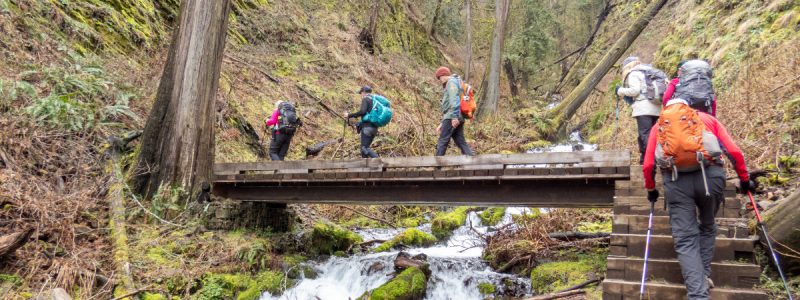
1 – Easy
Less than 6 miles and less than 1,000-ft elevation gain per day
2 – Moderate
6 to 10 miles or 1,000 to 2,000-ft elevation gain per day.
3 – Strenuous
10 to 12 miles or 2,000 to 3,000-ft elevation gain per day
4 – Very Strenuous
More than 12 miles or more than 3,000-ft elevation per day.
0 – Class
No experience needed. This is a training class.
1 – Easy
Minimum experience needed, ample opportunity for instruction.
2 – Moderate
Moderate experience needed, still a good opportunity for instruction.
3 – Strenuous
Advanced levels of experience needed, little opportunity for instruction.
4 – Very Strenuous
Must be entirely self-sufficient, no instruction provided.
0 – Class
No skills needed. This is a training class.
1 – Easy
Less than 5 miles and less than 500 ft elevation gain.
2 – Moderate
5 to 8 miles or 500 ft to 1,500 ft elevation gain.
3 – Strenuous
More than 8 miles or more than 1,500 ft elevation gain.
4 – Very Strenuous
Usually requires great effort, could include overnight outings requiring full packs.
0 – Class
No skills needed. This is a training class.
1 – Easy
Less than 6 miles and less than 500 ft elevation gain. Minimal stopping and turning skills necessary.
2 – Moderate
6 to 11 miles or 500 feet to 1,500 ft elevation gain. Stopping and turning skills are important.
3 – Strenuous
More than 11 miles, or greater than 1,500 ft elevation gain. Stopping and turning skills a must.
4 – Very Strenuous
Usually requires great effort and advanced skills. This could include overnight outings requiring full packs.
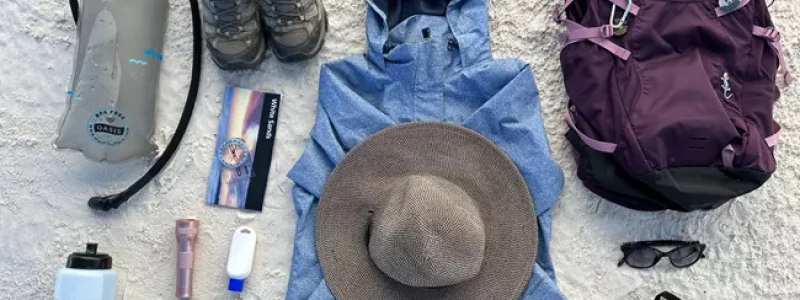

Check out the I-MAC ACTIVITY CALENDAR for upcoming trips. If you are interested in joining an I-MAC adventure, review the ACTIVITY CLASSIFICATION and TRIP COSTS & PASSES pages before you sign up to ensure the trip is right for you.
Each participant is responsible for their own safety and being prepared. Planning and preparation start with the 10 ESSENTIALS and staying up-to-date on road and trail conditions, permit requirements, party size limits, snowpack, wildfires, and weather.

Each participant is responsible for their own safety and being prepared. Planning and preparation start with the 10 ESSENTIALS and staying up-to-date on road and trail conditions, permit requirements, party size limits, snowpack, wildfires, and weather.
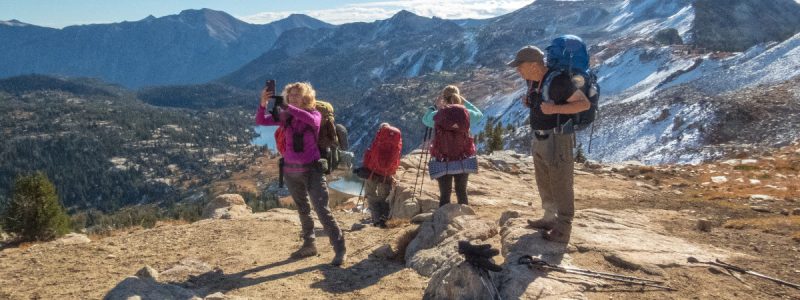
Are you looking to extend your outdoor adventure beyond day hikes? Backpacking is similar to hiking except that you bring all your gear with you including food, clothing, sleeping pad and bag, tent, and other personal items. Backpacking requires physical conditioning to ensure you have the stamina to carry the extra weight and be on the move for multiple days in a row. It is also important to have knowledge of map reading, Leave No Trace Principles, and and basic outdoor skills.
I-MAC members lead backpacking trips from easy overnight trips to challenging multi-day adventures even in the winter! Backpacking is a wonderful way to explore hard to reach locations and get off grid for a while.
I-IMAC offers a backpacking school once a year, which is a combination of indoor and outdoor classes designed to teach you what you need to know to get started on your own backpacking adventure. About once a year, I-MAC sponsors a Wilderness First Aid Class for members. The information learned in these classes can help save a life when out in the backcountry.
Check out the I-MAC activity calendar for upcoming trips. If you are interested in joining an I-MAC adventure, review the Activity Classification and Trip Costs & Passes pages before you sign up to ensure the trip is right for you.
Each participant is responsible for their own safety and being prepared. Planning and preparation start with the 10 essentials and staying up-to-date on road and trail conditions, permit requirements, party size limits, snowpack, wildfires, and weather.
Learn More